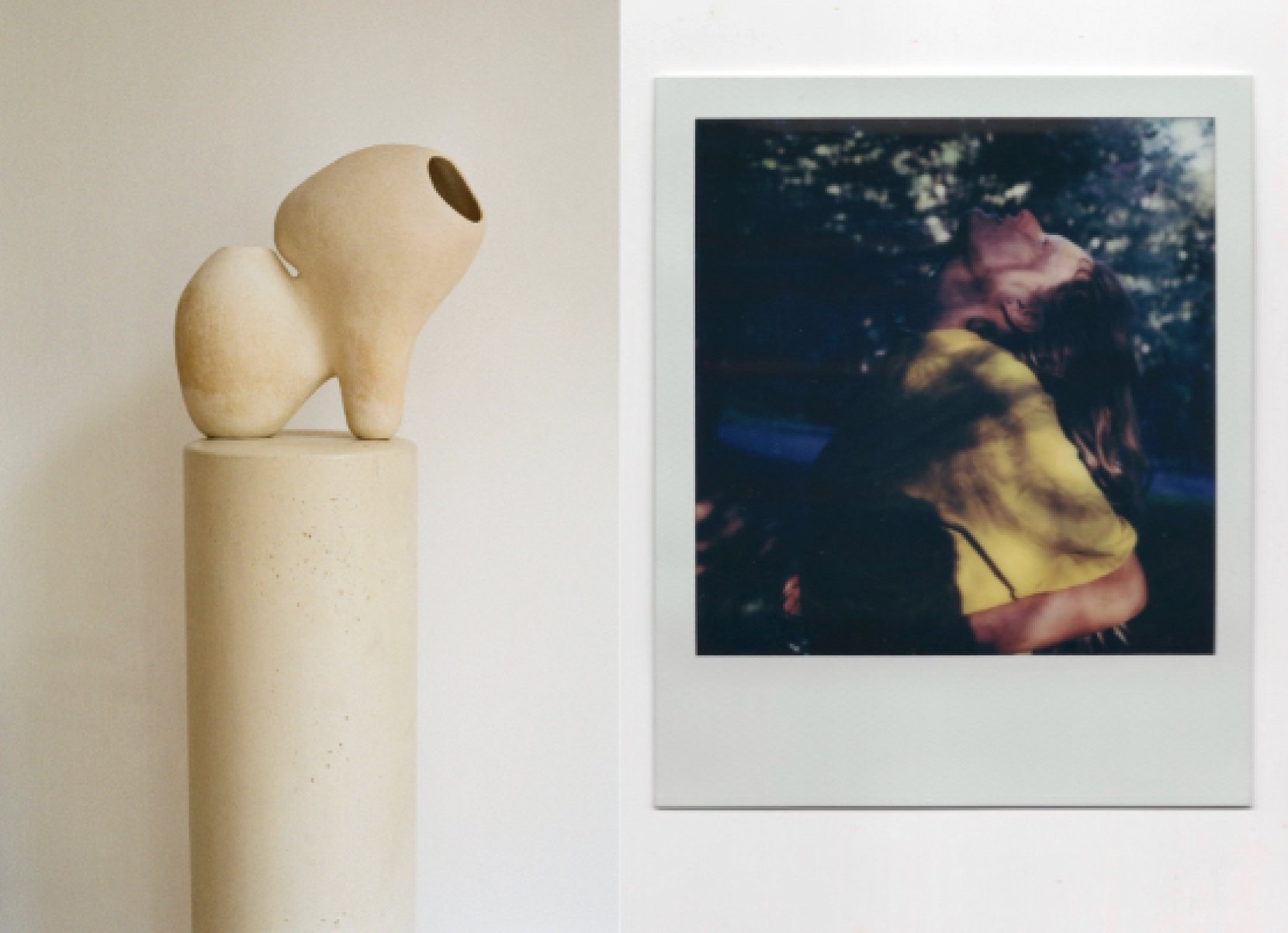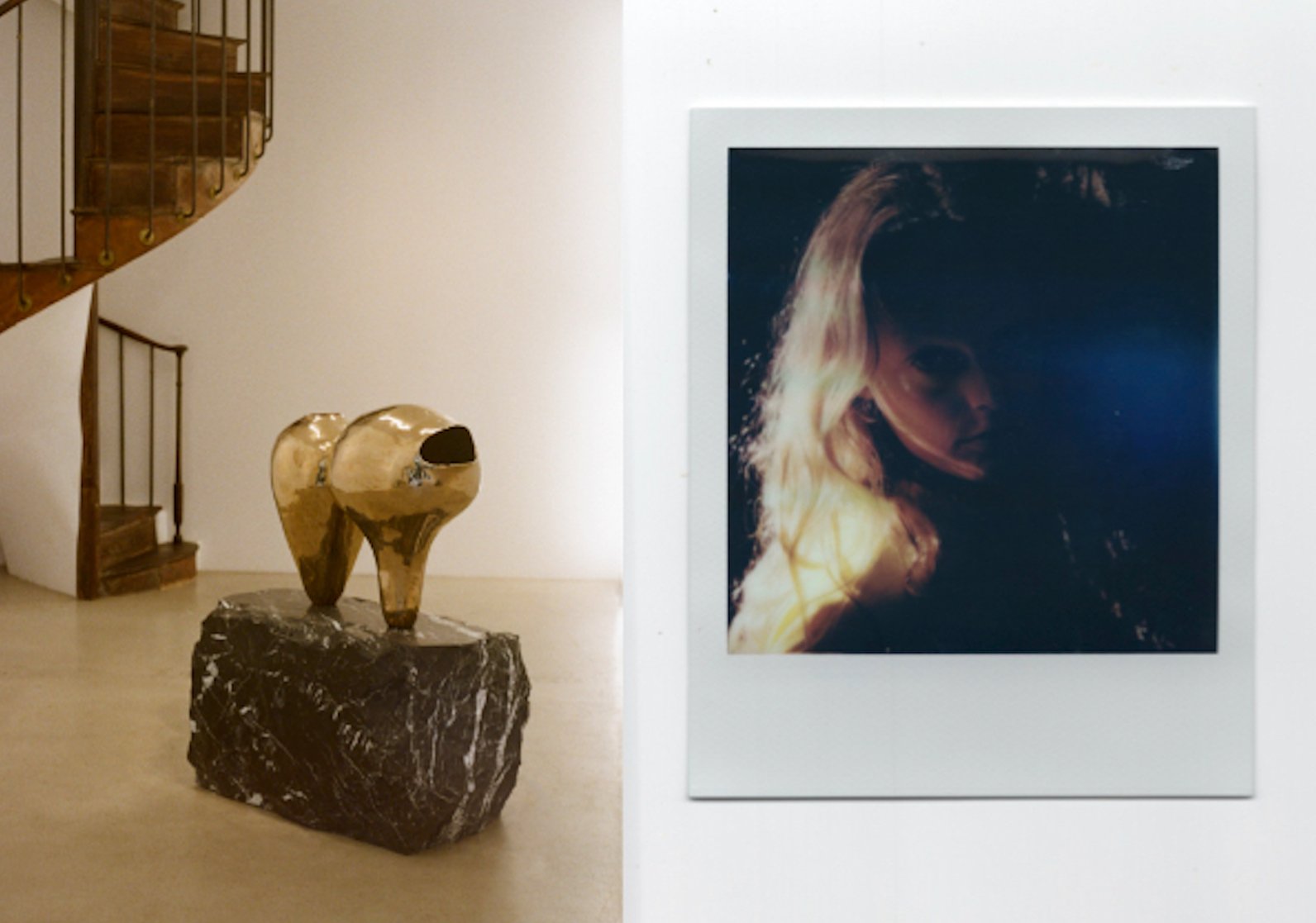Justin Williams
Major Arcana, death watching over Jade (2024)
Acrylic, oil, raw pigment and gold pigment on canvas
77.25 x 84.75 in (196.2 x 215.3 cm)
In Justin Williams’s newest exhibition, Synonym, at Roberts Projects, waves of stories collide and crash across timelines, pouring onto the canvas in lush and decadent palettes. Williams creates wormholes between his ancestral memories and the present day. His work carves spaces, ranging from cozy to claustrophobic, in which dead and living strangers coexist in moments of imagined connection. Williams’ world is seen through a kaleidoscope of childhood trinkets, native flora, and mythologized fauna, from goats to dogs to horses. The artist collects moments and mementos alike to collage in these quiet yet fantastical dreamscapes, mining through Westernized memories of suburban Australia and hitting rich veins of ancestral Egyptian aesthetics. Williams embraces the awkwardness of outsider life, and his work embodies the comforting realization that even outsiders create their own exiled community. To mark the occasion of Synonym, he discusses stories and people, which echo throughout his life and strangers whose moments of grief have shaped his work. Read the full interview here.













